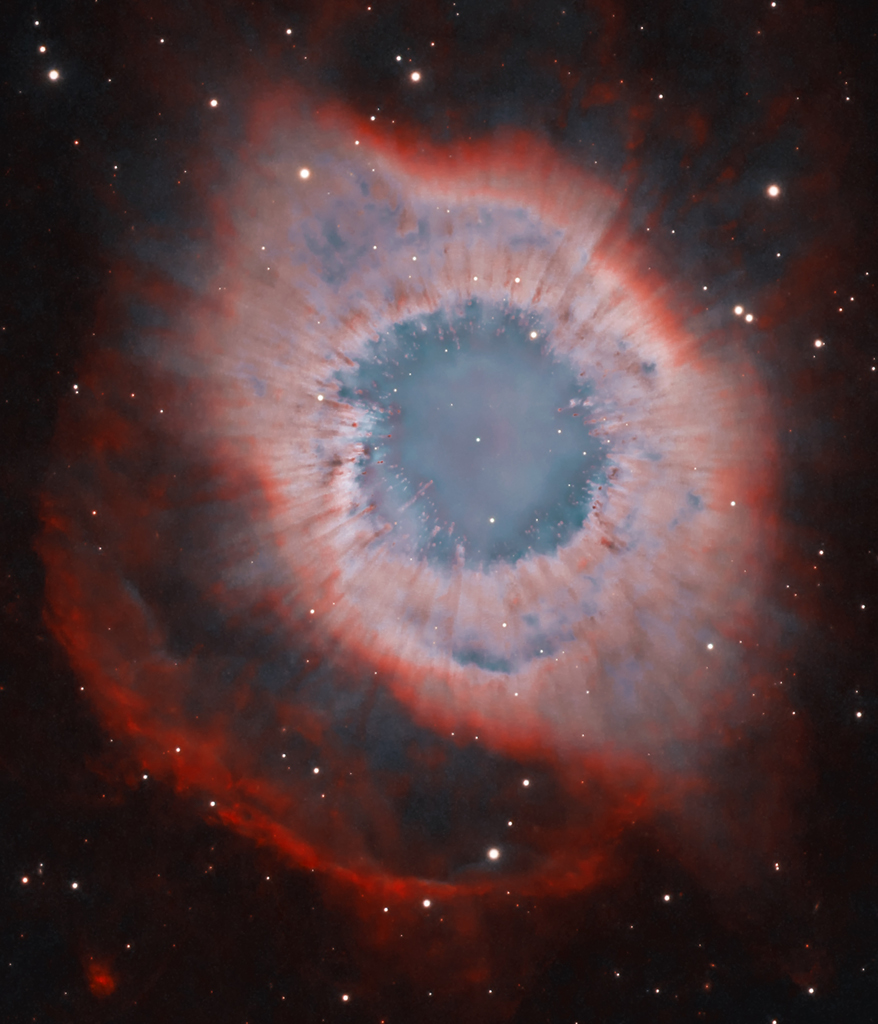2021年10月14日
NGC 7293: The Helix Nebula
Image Credit & Copyright: Ignacio Diaz Bobillo
Explanation: A mere seven hundred light years from Earth, toward the constellation Aquarius, a sun-like star is dying. Its last few thousand years have produced the Helix Nebula (NGC 7293), a well studied and nearby example of a Planetary Nebula, typical of this final phase of stellar evolution. A total of 90 hours of exposure time have gone in to creating this expansive view of the nebula. Combining narrow band image data from emission lines of hydrogen atoms in red and oxygen atoms in blue-green hues, it shows remarkable details of the Helix’s brighter inner region about 3 light-years across. The white dot at the Helix’s center is this Planetary Nebula’s hot, central star. A simple looking nebula at first glance, the Helix is now understood to have a surprisingly complex geometry.
Tomorrow’s picture: pixels in space
NGC 7293: 螺旋星云
影像提供与版权: Ignacio Diaz Bobillo
说明: 在宝瓶座方向,离我们只有700光年远之处,有一颗类太阳恒星滨临死亡…因此它在过去数千年,产生了螺旋星云 (Helix Nebula; NGC 7293),这个邻近广受探索的行星状星云。而为制作出上面这幅此星云的大视野影像,总共进行了90小时的曝光成像。这幅窄波段影像,整合原子氢的红光辐射数据及氧原子的蓝绿光辐射数据,以突显螺旋星云内围3光年区域的细微结构。位在螺旋星云中心的白色亮斑,就是星云炽热的中心星。乍看之下,螺旋星云结构看似极为简单,然而我们如今知道,它其实有出乎意料的复杂几何构造。
明日的图片: pixels in space



